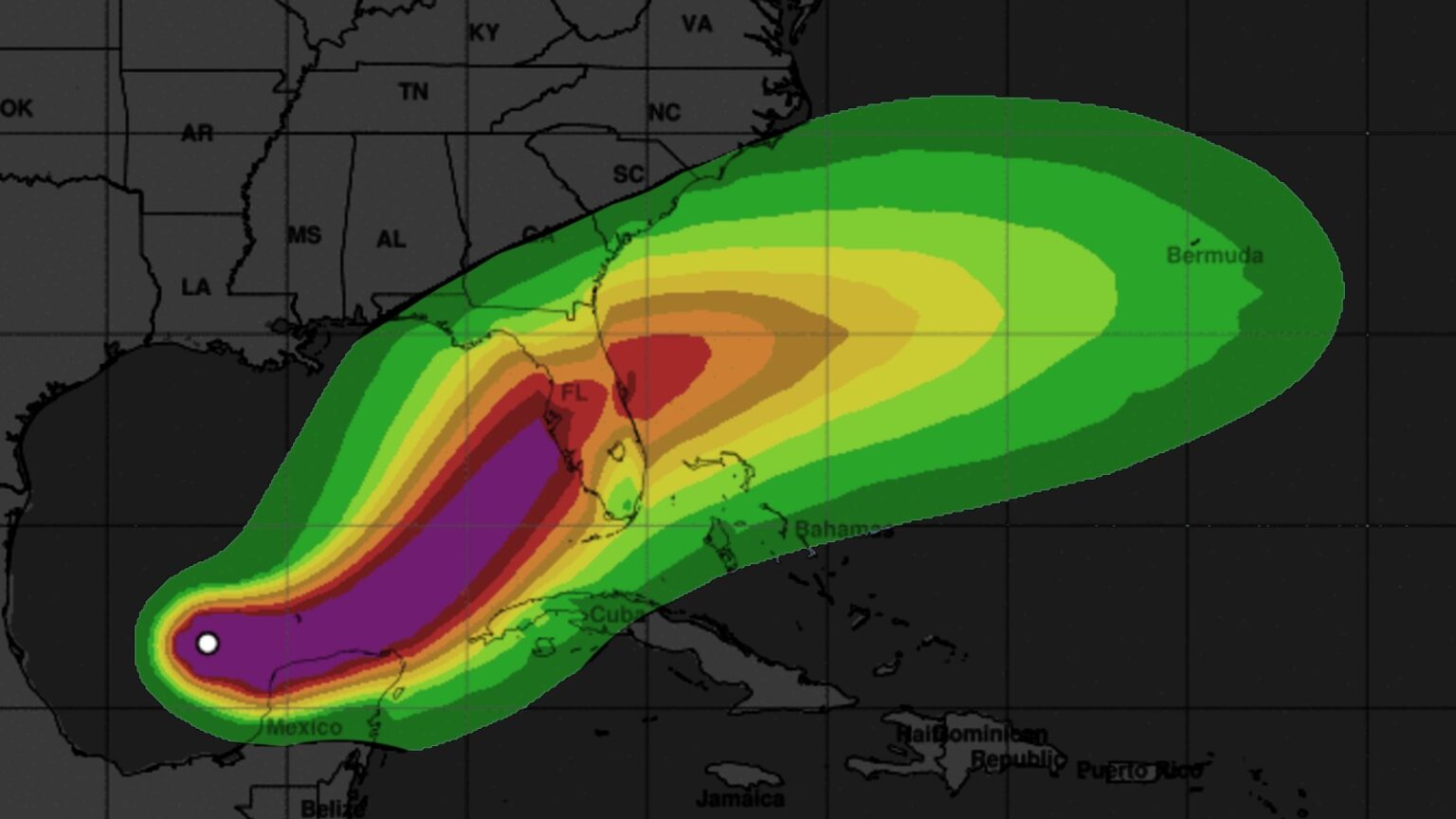Florida’s Gulf Coast is preparing for the impact of Hurricane Milton, with its powerful winds and massive storm surge threatening areas still recovering from the destruction caused by Hurricane Helene just 12 days ago and the devastation from Ian two years earlier.
Nearly all of Florida’s west coast was under a hurricane warning early Tuesday as the storm, with 155mph (250km/h) winds, moved toward the state at 9mph, drawing strength from the warm waters of the Gulf of Mexico.
Although Milton was downgraded to a category 4 hurricane, forecasters stressed that it still posed a significant threat to Florida.
Milton rapidly intensified on Monday, reaching category 5 status with 180mph sustained winds before being downgraded later in the day.
Florida is preparing for what could be its largest evacuation in seven years as Milton heads toward major population centers like Tampa and Orlando. This comes just two weeks after Hurricane Helene caused over 200 deaths and widespread destruction from Florida to the Appalachian Mountains.
While some fluctuations in intensity are expected, the National Weather Service warned that Milton would remain highly dangerous.
The storm is expected to make landfall on Wednesday or early Thursday in the Tampa Bay area, before crossing central Florida and heading into the Atlantic Ocean.
If Milton stays on its current path, it will be the 10th major hurricane (category 3 or higher) to hit the U.S. Gulf Coast since 2017.
Forecasters warned that the storm surge levels—waters pushed inland by the hurricane—would match the highest category that Milton reaches.
A CNN meteorologist noted that Milton is the third-fastest intensifying storm on record in the Atlantic. In less than 24 hours, its wind speeds surged by 90mph, with only two other hurricanes, Wilma in 2005 and Felix in 2007, strengthening more rapidly.
Experts have linked the increasing frequency of these intense storms to the climate crisis, driven in part by fossil fuel emissions.
Bill McKibben, an environmental scholar and co-founder of 350.org, pointed out on social media that Milton went from a tropical storm to a category 5 hurricane within just 22 hours, calling it a sign of a warming planet.
Hurricane expert John Morales delivered an emotional report on NBC, explaining that Milton’s winds had reached 160mph and were gaining strength in the Gulf of Mexico, where waters have been at record-high temperatures. Morales linked the storm’s intensity to global warming.
Weather officials expect Milton to bring heavy rainfall, flooding, life-threatening storm surges, and strong winds, with its intensity likely to last several days after peaking.
Florida Governor Ron DeSantis warned on Sunday that while it’s unclear where exactly Milton will make landfall, the state will face significant impacts.
“I don’t think there’s any scenario where we don’t have major impacts at this point,” DeSantis said, urging residents to complete their hurricane preparations. “If you are on that west coast of Florida, especially in barrier islands, just assume you will be asked to leave.”
This marks the first time since September that the Atlantic has had three hurricanes simultaneously, according to hurricane scientist Phil Klotzbach.
The St. Petersburg-Tampa Bay region is still dealing with the aftermath of Helene’s storm surge. Pinellas County, which includes St. Petersburg, saw at least 12 deaths from Helene.
Late last month, Helene’s storm surge caused widespread damage along the west coast of Florida, particularly in the narrow barrier islands stretching from St. Petersburg to Clearwater.
This week, areas like Pinellas, Hillsborough, Manatee, and Sarasota counties could experience a storm surge of 8-12 feet above ground, the National Weather Service warned.
Rainfall totals of 5-10 inches, with local amounts up to 15 inches, are expected across parts of Florida, bringing the risk of flash flooding and river flooding.
Governor DeSantis expanded the state of emergency to 51 counties and urged Floridians to prepare for power outages, stock up on supplies, and be ready for evacuation orders.
On Monday, President Joe Biden approved Florida’s emergency declaration, authorizing federal assistance to support state and local response efforts.
State officials are preparing for the largest evacuation since Hurricane Irma in 2017 and are urging residents in newly built homes outside evacuation zones to avoid unnecessary travel.
Mandatory evacuation orders were issued in parts of Charlotte, Pinellas, and Hillsborough counties, with more expected to follow.
Orlando and Tampa airports announced suspensions of operations, while schools and colleges in affected areas closed ahead of Milton’s arrival.
By Monday morning, hurricane, flood, and storm surge watches were in effect along the Gulf of Mexico and Florida’s west coast. The National Weather Service warned that Milton could be a historic storm for the region.



